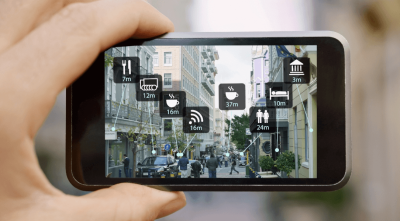Augmented Reality (AR)
AR is an improved version of the real world that uses computer-generated inputs like sound to video, visual elements, graphics to GPS, and other similar methods. As in the world we live in now, where data is everywhere, the main goal of augmented reality is to highlight certain parts of the real world, make them easier to understand and get smart insights that can be used in the real world. It is a rising trend among companies involved in mobile computing like Android's ARCore and Apple's ARkit and other business applications.

AR means adding interactive digital parts to parts of the user's physical world. Most AR apps used today rely on smartphones to show the digitally enhanced world. Users can turn on their phone's camera, look at the real world around them on the screen, and then use an AR app to add digital overlays to improve the world in a number of ways:
-
Superimposing images, digital information, and/or 3D models.
-
Adding real-time directions.
-
Adding colors in the user's environment's appearance.
-
Inserting the labels.
AR can also be thought of as an altered version of reality in which computer-generated content is added to the user's view of the real world. This lets digital assets be added to the user's real environment.
AR must also meet three essential criteria:
-
Combination of virtual world and the real things.
-
The Real-time interaction.
-
Precise 3D effects of real and virtual objects.